“Nowadays, children are always on their phones!” This stereotypical woe of nearly every 21st century parent is often received by an air of irreverence by adolescents who, in their sheer urgency to explore the novelty of the digital world, disregard their caregivers’ earnest concerns for their seemingly nostalgic undertones. While the older generations can at times be unnecessarily reproachful of social media, the plethora of psychosocial issues among virtually connected children across the globe suggests that perhaps they are not in the wrong.
As the digital revolution peaks, key players in the global arena including countries with a growing youth demographic – like the US, UK, Canada, France, Australia and India – have all, to some degree, acknowledged the repercussions of early exposure to social media for minor citizens. There is ongoing discourse in the developed world on regulating children’s access to social networking websites through the imposition of a variety of age-verification mechanisms and parental safety controls.
In Pakistan, the rapid proliferation of affordable smartphone companies and the simultaneous popularity of budget-friendly internet bundles has propelled the usage of social media during the past decade or so. The government’s failure to devise a foolproof age-gating mechanism for restricting children’s access to the top five most used social networking websites – YouTube, TikTok, Facebook, Snapchat and Instagram – among many others, has slowly but surely landed nearly 17.32 million users below the age of 18 in a developmental and psychosocial crisis.
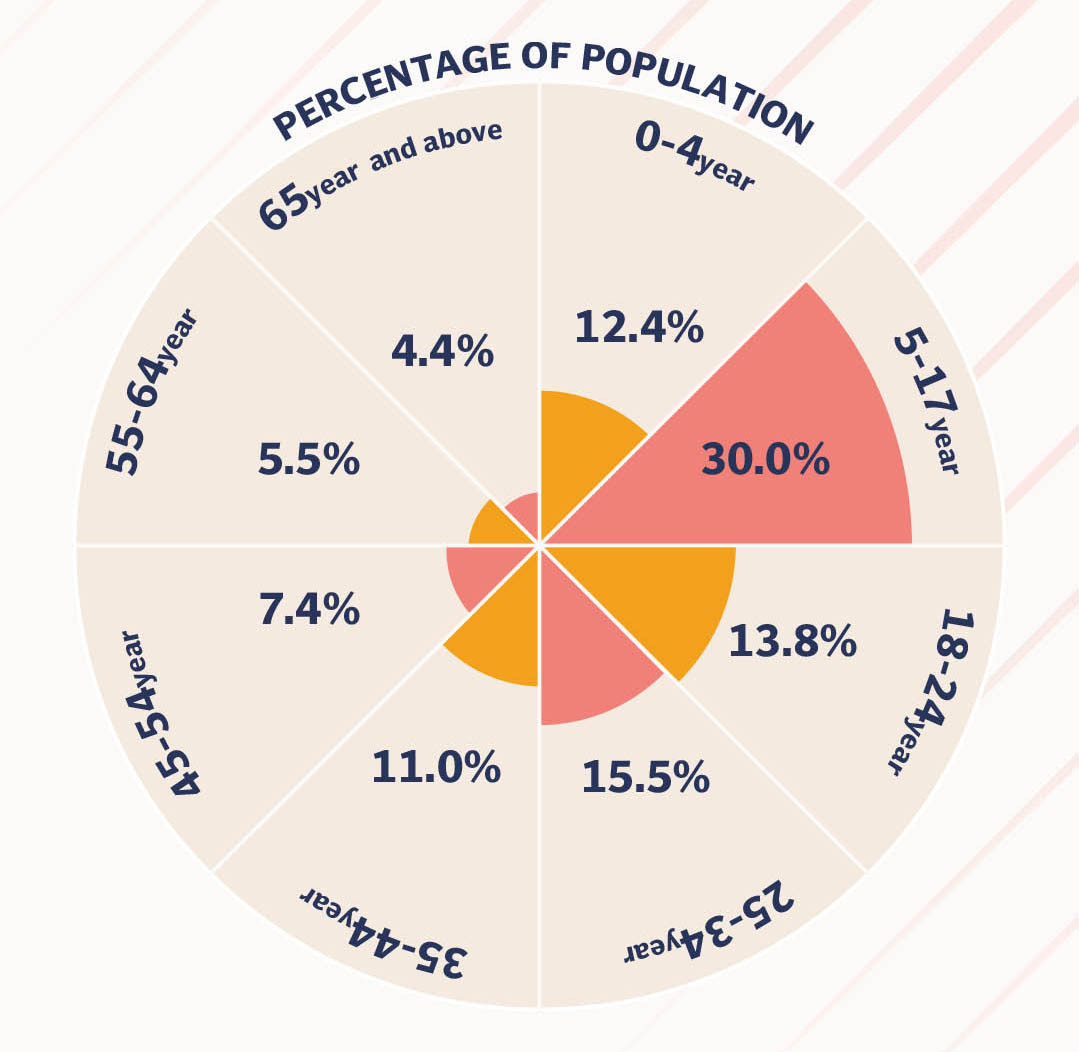
Confucius, the famous Chinese philosopher, once said, “I hear, I forget. I see, I remember. I do, I understand.” For the average child waking up each day to experience a new flavour of the world around, a direct and active interaction with the surrounding people and environment is imperative for ensuring their stable cognitive growth and emotional development.
Before the internet, these opportunities for learning and growth came naturally to children, who in their eager enthusiasm to probe and participate were always engaged in a variety of activities which allowed them to understand through doing. Whether it be developing empathy while comforting a crying sibling or cultivating patience after consistently crashing a paper plane, each moment was a milestone in their development. Sadly, this cycle of doing and understanding came to an end as soon as parents handed over an internet connected gadget with social media access to their little ones.
According to Dr Rafia Rafique, a child psychologist, the formative years of childhood and adolescence are crucial for the development of interpersonal skills and emotional intelligence. “Excessive engagement with social media during these critical periods may interfere with the natural acquisition of vital cognitive and emotional competencies since the immersive nature of endless scrolling limits the child’s direct, real-world social interactions,” warned Dr Rafique.
While the sight of a fussy child peacefully scrolling through YouTube Shorts or Instagram reels in the corner of a room will bring some relief to parents overwhelmed with the demands of their varying roles and responsibilities, psychologists warn that the nature of the child’s transient preoccupation is such that it can potentially ruin the neuroplasticity of their developing brain.
“Persistent exposure to rapidly changing, short-form content typical of many social media platforms alters the plasticity of the developing brain and can deeply impact the child’s attention span, critical thinking skills and their capacity for deep, meaningful face-to-face interactions,” said Dr Rafique. “Therefore, while social media can offer certain benefits, its usage by children necessitates careful consideration and monitoring.”
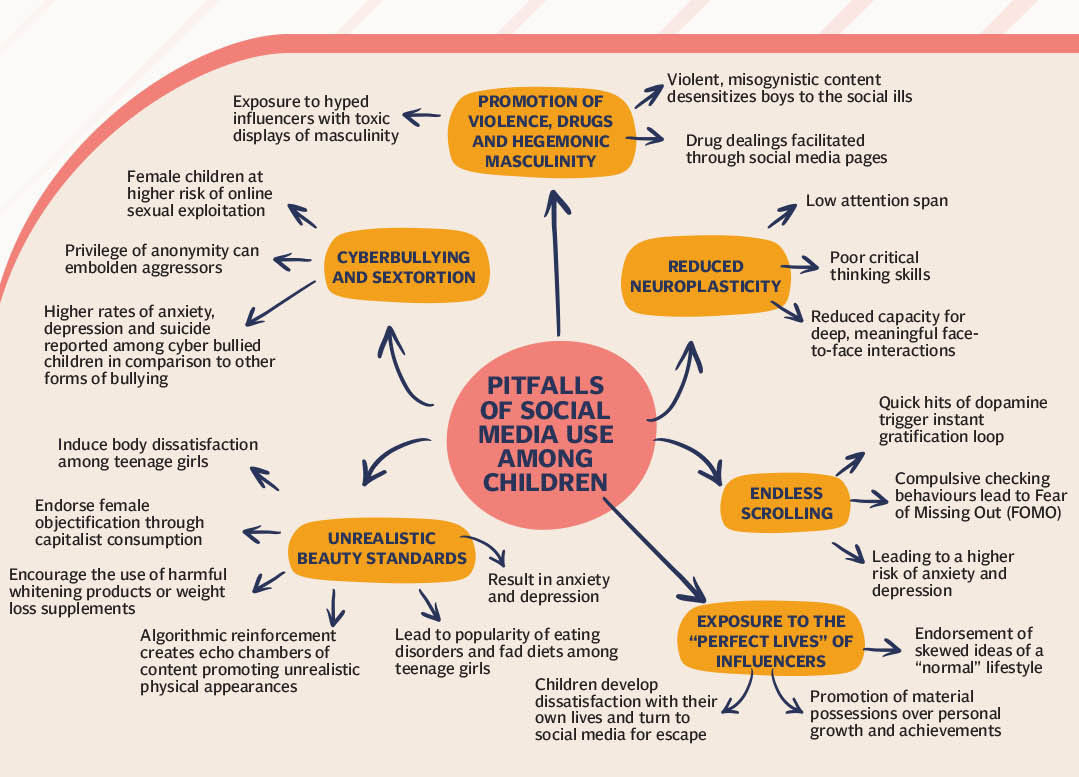
Stalk n’ scroll
While a five-year-old addicted to scrolling through YouTube can be tactfully redirected towards better alternatives by concerned caregivers, the connection between social media and children turns into a twisted melodrama when the child in question happens to be an anxious teenager struggling hard to fit in among peers exceedingly active on social media.
For Jalpari*, a ninth-grader settling into a new school, signing up for Instagram was initially a way for her to connect with her peers. “I was hooked on Instagram. It allowed me to connect with so many people all at once,” said the 14-year-old. “However, soon I realised that I had started using the app much more frequently than I had anticipated. Stalking other users and scrolling through their posts can become quite addictive.”
Within months her academic performance declined, she started suffering depressive spells and would also frequently stay up late at night.
Acknowledging Jalpari’s struggle with social media addiction, Dr Saadia Anwar Pasha, Assistant Professor of Communication Studies at the Allama Iqbal Open University shed light on the unique ways in which social media algorithms and design characteristics effectively contributed towards addiction among minor users. “Social media applications recommend content, which is intended to engage a particular logged-in user thereby leading them towards gradually developing an addiction,” she said. “Such design characteristics exploit the brain’s reward system, making it harder for young users in particular to avoid or disengage from the apps,” explained Dr Pasha.
“The continuous stream of content makes it difficult for children to sustain attention on a single task, potentially impairing their ability to focus and engage in deep learning or critical thinking. Furthermore, the addictive nature of infinite scrolling can lead to excessive screen time, especially at night,” echoed Dr Rafique. “This is because endless scrolling consistently provides novel stimuli that triggers the release of dopamine –the happy hormone. This causes children to enter the instant gratification loop, which leads them to develop the compulsive checking behaviour. Over time such adolescents develop the fear of missing out (FOMO), which can pave the way for serious mental health challenges,” she added.
Cyberbullying and sextortion
For the curious adolescent, social media, with its customized content recommendations and updated lists of followers and likes, is the epitome of digital joy up until one fine day, when a random message from an unknown account transforms the exuberance into dread.
“When she was 13, my friend started receiving menacing messages online from an unknown account, which was later found to be in the use of a senior student from our school. The boy claimed to have sensitive pictures of my friend, which he threatened to leak in case she refused to meet him in-person. She went through immense mental turmoil during this time,” recalled Jalpari.
According to Dr Pasha, the risk of cyberbullying and sextortion is more common than one would like to imagine. “Children are often times not even safe within the four walls of their homes, then how can one imagine that they can be safe on social media where connectivity, exposure, and experiences are all just a click away. When a child has a gadget in their hands, they are exposed to all kinds of harms which are rarely discussed among our social circles given their tabooed nature,” opined Dr Pasha. “Girls are more likely to fall prey to cyber-bullying since they have less social exposure than male children from a young age. Hence, when they enter the online space, they are easily coerced by cyberbullies into sharing sensitive information or engaging in reproachable activities, which they may not approve of,” said Dr Uzma Ashiq Khan, Assistant Professor of Gender Studies at the Lahore College for Women University (LCWU).
According to Dr Rafique, the prevalence of cyberbullying on social media platforms is a significant concern. “The digital realm provides a unique environment where the privilege of anonymity can embolden aggressors who incur severe psychological distress to the victims. Hence, cyberbullied adolescents report higher rates of depression, anxiety, and suicidal ideation as compared to those facing traditional forms of bullying,” she explained.
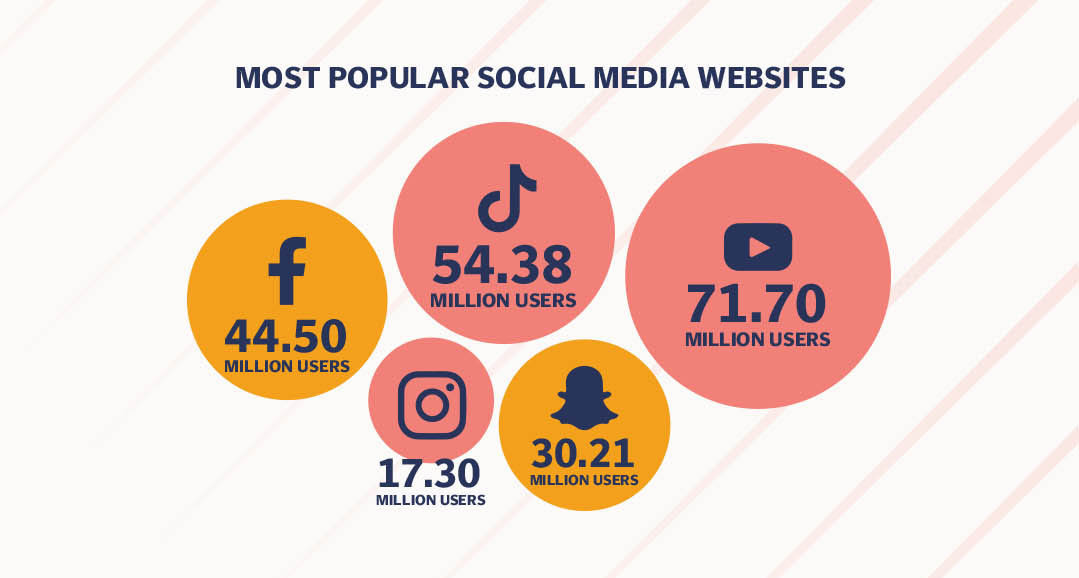
Eye creams and beauty dreams
Growing up in a man’s world where women are valued largely on the basis of their physical appeal to the male gaze, teenage girls perpetually scrutinised for every roll of fat, darkened patch of skin or even the way they sit, often develop a sense of social alienation as soon as puberty hits.
With body image issues already kicking in thanks to misogynistic standards of desirability, female adolescents’ regular exposure to beauty bloggers with luxuriant hair, chiselled jawlines, flawless skin, plumped lips, a zero-sized physique and a Barbie doll demeanour - all enhanced by the flattering beams of several strategically positioned ring lights and endless filters - only means that the society will soon end up with a whole generation of insecure young women glued to the mirror.
“As soon as I started following beauty bloggers, I was constantly in awe of how pretty and perfect they looked all the time. The more time I spent on Instagram, the more I would question my own appearance and become insecure about my own looks,” shared Jalpari.
Bloggers promoting unrealistic beauty standards is just the tip of the iceberg. The grim side of capitalistic consumption thrives on female objectification, where every flawless physical trait of a beauty influencer on social media is projected to be the direct result of the efficacy of some cosmetic brand.
While adult users can spot such marketing tactics, for a teenager desiring to look desirable, any routine or product allowing them to resemble their favourite beauty guru’s regardless of its painstaking steps or risky side effects is wholly welcome, be it a 7-step Korean skincare regime, an odd looking Chinese gua sha stone, a pouch of Thai whitening emulsion or a box of Pakistani weight loss supplements.
“Beauty products and their marketing tactics have always been under scrutiny for promoting a sense of discontentment among the younger generation. A capitalist is inclined to sell their products no matter what messages are being conveyed. Therefore, the propagation of unrealistic beauty through the promotion of specific products on social media has gradually led to the development of body dissatisfaction among not only girls, but also boys,” commented Dr Pasha.
While it could be argued that the marketing of beauty products through other mediums like television could also bring about a similar effect among teenagers, Dr Rafique highlighted how social media’s unique algorithmic reinforcement creates echo chambers of content promoting unrealistic physical appearances and filtered realities.
“Social media use among girls has been correlated with a rise in eating disorders, fad diets and weight loss supplements since influencers often normalise extreme thinness. All of the above can culminate into an increased incidence of depression and anxiety,” stated Dr Rafique.
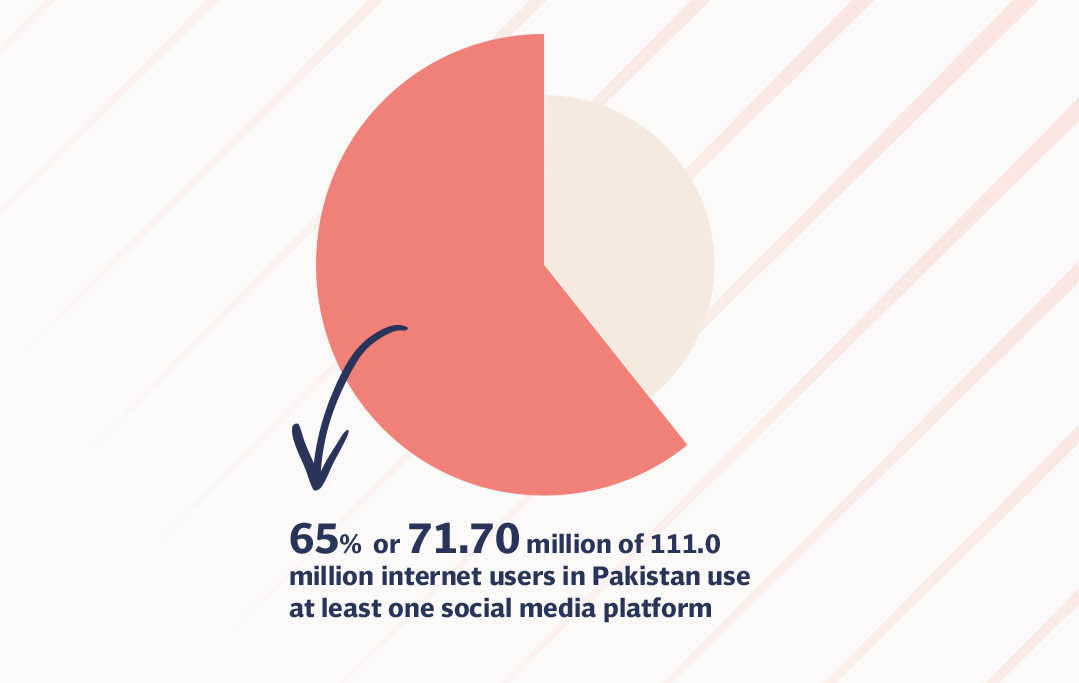
Guns, gangs and toxic masculinity
Growing age boys usually undergo a phase of reckless abandonment, where in the absence of a strictly enforced value system and continuous parental monitoring, every objectionable or risky activity appears fun, be it one-wheeling, street racing, drugs, gun shooting, or even catcalling.
According to Dr Uzma, a gender studies expert, social media exposes young boys to a host of violent and harmful content, which can potentially desensitise them to the vices over time and encourage them to partake in the activities themselves.
A classic case in point was Lahore’s Gang 102. Comprising of a group of school boys, the gang was notorious for beating up students, street racing across the city and firing into the air before uploading catchy reels of all their ill deeds onto streaming platforms like YouTube and TikTok, where they enjoyed a substantial fan following. Although the ringleader of the gang was arrested last year in Karachi, young boys across the country remain exposed to the ugliest side of machismo through other toxic masculine ideals on their screens.
“Take the case of Andrew Tate, a social media influencer, who after reverting to Islam, has become an idol for many boys today, even though he has been accused of attempted rapes in Romania. When boys start idealising men with such problematic projections of masculinity, engaging in guns and violence is no big deal,” opined Dr Pasha.
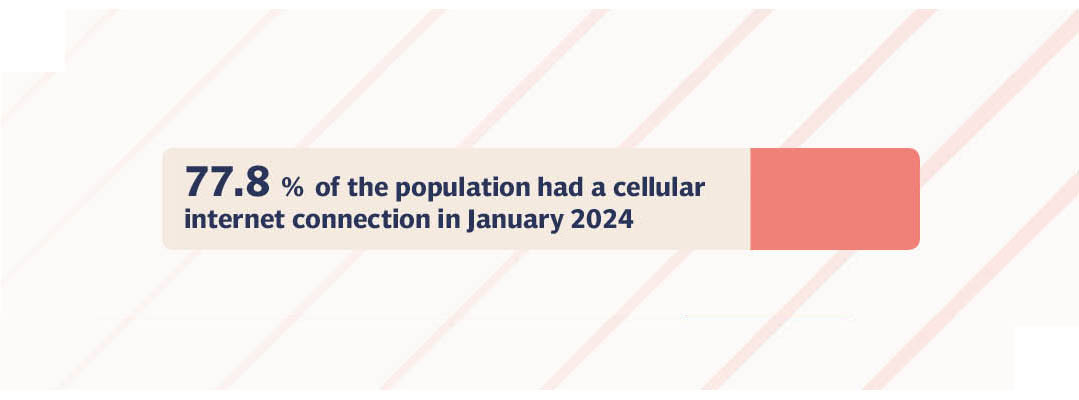
The “influence” of influencers
A couple of years ago, Wesley Snipes, an American actor and martial artist, posted an apt description of social media on X. “Don’t let the internet rush you. No one is posting their failures.” Unfortunately, this hard reality of the virtual world is impossible to explain to a naïve teenager, who while passively observing the seemingly “perfect” lives of influencers ends up assuming that buying new sports cars, flaunting million-rupee bags and jetting off to exotic destinations abroad is all their lives are about.
“Watching the sparkling lives of influencers on social media can destroy children’s sense of contentment. Eventually, they start comparing their lives with the so-called perfect lives online and in no time are poisoned with sadness. To live a happy life, children should be content with what they have. Unfortunately, this is very difficult for those who are constantly viewing the exaggerated displays of luxury many influencers are involved in,” observed Jalpari.
“Even existing research shows that the role of social media influencers is more destructive than constructive since they create and reinforce the concept of ‘perfection’, which allows self-dissatisfaction to grow among children,” pointed out Dr Pasha.
“Hence, children may develop skewed ideas of what a ‘normal’ lifestyle looks like, leading to dissatisfaction with their own lives. They may also start valuing material possessions more and might equate success solely with wealth and luxury, overlooking personal growth and achievements. Furthermore, the gap between influencers' lifestyles and children's realities can cause feelings of inadequacy and frustration as children may pressurise their parents to provide similar luxuries, causing family stress and financial strain. Eventually, children might become less appreciative of what they have, and habitually turn to social media to escape their own realities,” analysed Dr Rafique.
The need for age-gating
In light of all the harms associated with social media usage among children, Dr Pasha advised restricting access to social media for children under the age of 16 using biometric age-gating. “Biometric age-gating can protect young minds by allowing them to develop the maturity level which is needed to minimise the pitfalls and maximise the positives of the technology. In this regard, the government can issue guidelines on age-gating for social media platforms to comply with, such as the use of protective and non-intrusive biometric technologies like facial recognition. Social media companies can then incorporate these mechanisms into their registration process, mandating users to verify their age before creating any account. However, the government and social media companies must also invest in strong security measures to avoid misutilisation of user data by maintaining a balance between privacy, safety, and accessibility,” concluded Dr Pasha, who is also a communication studies expert.
With additional reporting by Khalid Rasheed
*Name has been changed to protect identity
